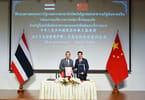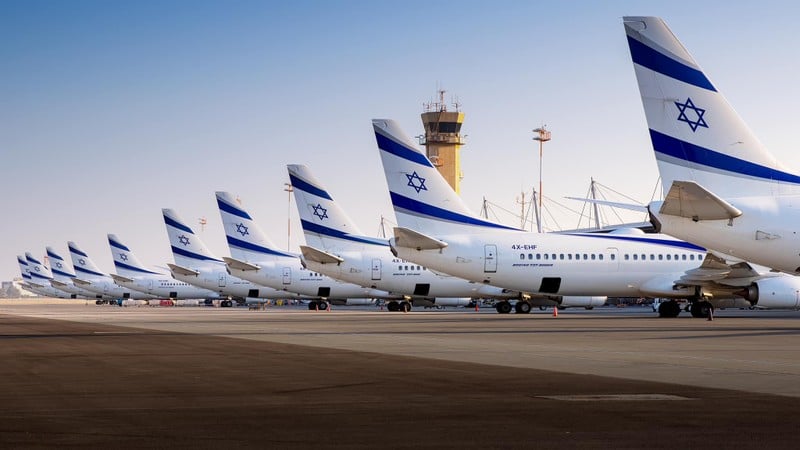It has been many years since I was in Cape Town, South Africa, conducting primary research for my doctorate in International Business. While the hotels were lovely, the restaurants for dining and tasting South African wines were world-class; it was the imbalance between wealth and poverty that overshadowed my enthusiasm. The visible inequality in Johannesburg and Cape Town covered multiple social/cultural zones from inadequate housing and serious unemployment to safety and security issues.
Rich and Poor
So, when I received an invitation from Coyne PR requesting my presence at a small intimate lunch with the South African Minister of Tourism, Marthinus van Schalkwyk, at Le Bernadin, a Zagat top pick for 2012 and awarded 4 stars from the New York Times, I was shocked. A quick scan of the online menu prices combined with the reality that many South Africans earn less than $2.00 per day – immediately triggered an OMG reaction. Well – I naively thought, maybe there will be only 4 or 5 journalists at the lunch, and perhaps the restaurant owner has a soft spot for South Africa and offered a very reasonable price for the opportunity to host the very distinguished members of South African tourism.
Large Numbers + Private Dining
I hate being late to anything and I especially hate being late for a small intimate luncheon with a high ranking government official, so I started out very early to get to the restaurant on time. As luck would have it, I got engrossed in my book and missed the best subway stop. Finally surfacing on the eastside of Manhattan, I looked at my watch and panicked. It was lunch hour mid-week. A cab would take forever. A crosstown bus would really be stupid; so I put on my sneakers and made a mad dash across town for the restaurant.
Sweating and hyperventilating I ran to the west side, threw open the restaurant door and quickly asked the maître d’ where the South African luncheon was being held. She graciously escorted me the length of the restaurant and up a staircase to a private room that was reserved for the event. What private room? As I scurried into the space with apologizes forming on my lips, what did I encounter? Scores and scores of people (estimated at 100+), including celebrities, video cameras, stage lighting, and runway backdrops. Surely I was at the wrong luncheon. The space looked like it was set for the Academy Awards and not a small intimate luncheon with the Tourism c-suite executives.
As I tried to adjust to the large number of movie and television celebrities, government officials and other VIPS who were too important to wear name badges – I was encouraged to take a seat – so far away from the “reserved tables,” that I could easily have been in New Jersey.
“What happened to the small luncheon and my scheduled interview with Marthinus van Schalkwyk, the Tourism Minister?” I asked the PR representative. She smiled at my guileless question as to the size of the event and assured me she would do her best to arrange a few moments of the very precious time for a one-to-one with the Tourism Minister. What was he so busy doing? A glare on the face of the PR associate warned me that I was treading in the wrong direction with my questions.
So – lunch was served, wine was served, the celebrities spoke, the government officials spoke and I waited to be summoned for the interview. Finally, just as I was about to get up to leave, I felt a light tap on my shoulder: The Tourism Minister had five minutes to speak with me and the Ministers’ assistant actually eyeballed his watch to make sure that that I would not exceed the timeframe.
Government Representatives or Celebrities
I have used up all this space to describe the episode because it stands in such stark contrast to my interviews with the Ministers of Tourism from Israel, and Brussels, and Brazil, and the myriad of other country government officials I have talked with over the years. Most of the Ministers have been eager to share their life and times, to discuss their thoughts and dreams and frustrations, in some cases – eager – to have 1.2 million global readers step ( even for a moment) into their shoes to experience both the delight and frustrations associated with their position.
The Best of South Africa
I am not sharing state secrets by writing that many of the best wines on the planet come from South Africa. Although the SA chefs have yet to populate the Cooking Channel, the gourmet cuisine prepared in the South African hotel and restaurant kitchens are among the best dining experiences – anywhere. The five star/luxury hotels (i.e., Palace of the Lost City by Sol Kerzner) introduced the industry to the cutting edge in hotel design between lavish and tawdry. Many South African universities offer a world-class education and the country provides noted medical and health care services to the region.
The Worst of South Africa
Unfortunately the poverty in South Africa continues unabated and no one appears to have found a solution. It is also not a secret that scarcity begets crime and the rate of criminal activity continues. In 2011, South Africa’s murder rate was 30.9 per 100,000 people. On this basis, according to the UNODC data, it was ranked eighth out of the 84 countries assessed.
The quality of life for people living in the country continues to be dismal. The first after –apartheid census across South Africa reported 1,453,015 households living in informal settlements (or squatter camps); the 2011 census revealed that this number had increased to 1,963,096 households. Using this data, there are 1.4 times more people living in informal settlements than there were in 1996. In addition, 4.4 million people, estimated by research organization Afesis, live in shacks and shanties with no services: almost 10 percent of the population.
Trade may be restricted because the infrastructure is inadequate to meet global demands. Without increased international trade, employment opportunities remain dormant (i.e., the most recent 2013 quarterly labor force survey reported an unemployment rate of 24.7%). According to the IMF’s most recent figures, South Africa has the sixth highest unemployment rate behind Macedonia, Bosnia-Herzegovina, Serbia, Greece and Spain.
These challenges hamper the growth of tourism and create an ongoing dilemma for those responsible for growth in this economic sector.
Tourism Benefits Whom
StatsSA states 94,7% of foreign arrivals in 2012 were “visitors” of which 29,7% were “same day visitors” and 70,3% – or 9,2-million people – were overnight visitors or “tourists” with the balance classed as business travelers, students and workers. SADC countries are the single biggest source of foreign visitors to South Africa, accounting for more than 70% of all tourists. Despite growth in arrivals for 2011, revenue generated decreased by 2.2 percent (Rand 1.6 billion) and a decline in length of stay. Declining markets included America (-5.5 percent), and Europe (-3.5 percent) with a decline in total direct spending of Rand 74.0 Billion (-3.0 percent).
A 2011 research study found that 43 percent of visitors to South Africa were there to visit friends and family. Other reasons for the trip included culture and heritage (29 percent), scenic beauty (26 percent), and wildlife/safari (10 percent). Commenting on their in-country experience, some found value for money (33 percent), good service (27 percent), and hospitality and friendly service (5 percent).
While tourism is an important part of the economic engine for almost every country, research by Krugell, Rossouw and Saayman (2012) shows that the poor benefit very little in the short term from additional tourism income. They also determined that while domestic and international tourist expenditures affect the economy differently, both markets are important but they must be supported by policies that focus on the labor market and human resource development. In South Africa these areas are being addressed – but relatively slowly. In 2013, 60 percent of government spending was on social wages that included healthcare, no-fee schools, social grants, old age pensions, housing, water, electricity and sanitation.
Seale (2012) finds that tourism development often involves construction and alterations that are aimed at pleasing outsiders as opposed to reflecting the interests and needs of all-year residents. She also finds that tourism is not a stable industry and in difficult economic periods, fewer people travel. Furthermore, the jobs created are often low-paid. Tourism may be a supplement to other industry development, but should not been seen as an economic panacea.
Kumar (2013) determined that if tourism has any hope in reducing poverty – it must be holistic and include an educational component. The education should include financial literacy as well as training in the use of technology for maintaining the business enterprises as well as for promoting the destination.
Money Well Spent?
The World Bank finds that South Africa, suffering from high unemployment and widespread poverty, needs better policies to support ailing exporters. Catriona Purfied, the lead economist at the World Bank suggests that South African adopt measures that include ensuring greater competition among companies, resolving infrastructure constraints and cutting logistics costs, as well as deeper regional integration in goods and services. The challenge around infrastructure constraints relates mainly to electricity supply shortages. Although the economy is growing at a rate of 2.7 percent (an increase from 1.9 percent in 2013), it is far too slow to create enough jobs to dent official unemployment rates that hover near a quarter of the workforce.
While tourism has continued to outperform all other sectors of the economy, former Deputy President Phumzile Mlambo-Ngcuka – who heads Asgi-SA – has stated that the sector is far from saturated. She said challenges facing the tourism industry included increasing volumes of both local and foreign tourists, increasing tourist spend and improving the geographic spread within the country beyond the three provinces that attract the most tourists – KwaZulu-Natal, Gauteng and the Western Cape
Increase the Tourism Investment
In a recent review of the funding allocated to South African Tourism, Jansen van Vuuren of the Grant Thornton Advisory Services team determined that although President Jacob Zuma recognized the importance of tourism in his State of the Nation Address, it was not reflected in the budget speech by Finance Minister Pravin Gordham on February 26, 2014; budget allocations for Tourism for 2014-15 were increased by only 2.6 percent.
In addition, the Travel and Tourism Competitiveness Report for 2011, produced by the World Economic Forum’s (WEF), found that South Africa is ranked at number 134 out of 139 countries for Travel and Tourism government expenditure.
“Unfortunately, if one considers this poor ranking in the WEF Report, coupled with the dismal budget allocations announced in this week’s Budget, it is hard to comprehend how we intend to boost tourism and create employment as per President Jacob Zuma’s announcement in his State of the Nation Address,” stated Grant Thornton’s’ Jansen van Vuuren.
Going Forward
In the words of Alan Hawkins (http://www.staysa.co.za/news_article/9/The-future-of-tourism-in-South-Africa) ,”In South Africa the weather is great, the beaches, comparable to the best in the world, our natural kingdom, the Fynbbos, Table Mountain and the Drakensberg, the best and most reachable game Reserves in the world, Robben Island, the Battlefields of KZN, the Wild Coast and the Sardine run…why then aren’t we enjoying our fair share of the billions of dollars that are spent on international travel. In marketing it has been said, ‘brag shamelessly’, in my humble opinion, we simply don’t boast enough, South African travel has everything to offer any visitor, we simply have to get our product together, fine-tune levels of service through a commitment to training and human resource development and Government needs to commit to SA tourism through assisting small business and increasing, substantially, it’s commitment to marketing South Africa, both locally and internationally. South Africa remains the best kept travel secret in the world.”
Less Glitz and More Savvy
It appears that there is optimism for success in South Africa – when and if the leadership of the economy listens to and learns from the organizations and sectors most interested and vested in its accomplishments. Perhaps the glitz and glamour of Hollywood and highly – rated Zagat dining should be postponed until the country is able to provide bread and potable water on every table and adequate health care for every one of the people living within its geographical boundaries.
WHAT TO TAKE AWAY FROM THIS ARTICLE:
- As I tried to adjust to the large number of movie and television celebrities, government officials and other VIPS who were too important to wear name badges – I was encouraged to take a seat – so far away from the “reserved tables,” that I could easily have been in New Jersey.
- I have used up all this space to describe the episode because it stands in such stark contrast to my interviews with the Ministers of Tourism from Israel, and Brussels, and Brazil, and the myriad of other country government officials I have talked with over the years.
- So, when I received an invitation from Coyne PR requesting my presence at a small intimate lunch with the South African Minister of Tourism, Marthinus van Schalkwyk, at Le Bernadin, a Zagat top pick for 2012 and awarded 4 stars from the New York Times, I was shocked.






















